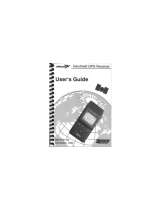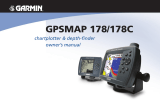
ii GPSMAP 495 Owner’s Manual
Introduction > Table of Contents
Table of Contents
Introduction ...........................................................................i
About This Manual ..................................................................... i
Warnings ................................................................................... v
Battery Warnings .......................................................................vi
Important Information ................................................................vi
Getting Started .....................................................................1
Unit Overview ............................................................................ 1
Charging the GPSMAP 495 ...................................................... 2
Turning On the GPSMAP 495 ................................................... 3
Getting Satellite Signals ............................................................ 4
Learning About the Keypad ....................................................... 7
Using the GPSMAP 495 ............................................................ 8
Simulator Mode ....................................................................... 11
Basic Operation In Aviation Mode ...................................13
Aviation Mode Page Sequence ............................................... 13
Creating a Direct To ................................................................. 14
Finding a Nearby Point ............................................................ 18
Selecting an Approach ............................................................ 23
Finding Points on Land ............................................................ 25
Marking a Waypoint ................................................................. 26
Creating a Flight Plan (Route) ................................................. 27
Following your Flight Plan ....................................................... 28
Aviation Mode Pages ........................................................29
Map Page ................................................................................ 29
Terrain Page ............................................................................ 37
Panel Page .............................................................................. 40
Active Route Page ................................................................... 44
Position Data Page .................................................................. 45
Flight Log ................................................................................. 46
E6B Tab ................................................................................... 49
Basic Operation In Automotive Mode ..............................51
Automotive Mode Page Sequence .......................................... 51
Navigating in Automotive Mode ............................................... 52
Finding an Item ........................................................................ 54
Creating Routes ...................................................................... 57
Creating Waypoints ................................................................. 59
Following an Automotive Route ............................................... 62
Editing Your Route ................................................................... 63
Automotive Mode Pages and Features ...........................65
Map Page ................................................................................ 65
Highway Page ......................................................................... 66
Current Route Page ................................................................ 68
Trip Computer .......................................................................... 69
Editing and Managing Routes ................................................. 70
Editing and Managing Waypoints ............................................ 74
Managing Your Tracks ............................................................. 83






















